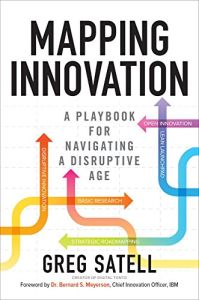Join getAbstract to access the summary!

Join getAbstract to access the summary!
Greg Satell
Mapping Innovation
A Playbook for Navigating a Disruptive Age
McGraw-Hill, 2017
What's inside?
Creative insider Greg Satell guides you to more efficient, productive innovation.
Recommendation
Innovation can be a long, tough slog. Consider the Macintosh. In 1968, US government engineer Douglas Engelbart demonstrated – in what is now called the “Mother of All Demos” – how people could interact with computers. He used a keyboard and an innovation he called a “mouse” to create, edit and move text on a screen and other seemingly magical things. Later, Xerox researchers enhanced his concept with the development of the Alto personal computer. But it wasn’t until 1984, 16 years after Engelbart’s demonstration, that Apple’s Steve Jobs transformed those developments into the Macintosh. That was fast action for its day, but innovation must move even more quickly now. Innovation expert Greg Satell explains how innovation works, what it requires, how to manage it and how to do it well. getAbstract recommends his comprehensive innovation manual to start-ups, investors, large firms and small businesses.
Summary
About the Author
Greg Satell, an expert on innovation, built and managed media businesses in Eastern Europe.


















Comment on this summary